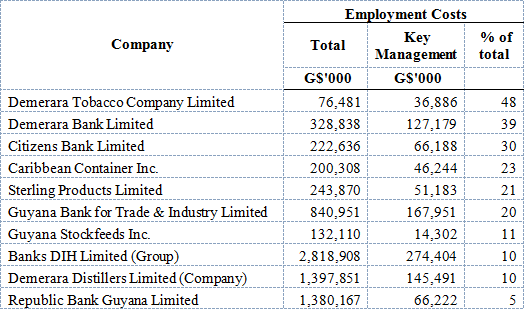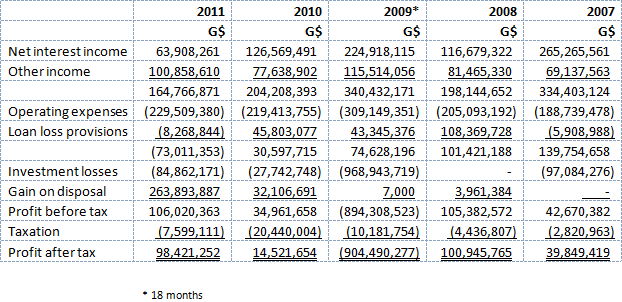Introduction
The events of the past week have been significant and distracting. It started with the sole AFC representative on the Public Accounts Committee not attending one of the most critical sessions of the PAC – ever. In the process and against all the rules of professional ethics, the wife of the Minister of Finance has been elevated to being the key intellect and influence in the Audit Office. That failure by the AFC for which it never even bothered to express regret, let alone an apology and sanction, was followed by the announcement of the renewal of the appointment of Professor Compton Bourne for another three years. Within three days he renounced the extension, leaving the university in continuing shambles. Then came two resignations: one from the CEO of NCN Mr Mohammed Sattaur and the CEO of telecommunications giant Guyana Telephone and Telegraph Company Mr Yog Mahadeo who only hours earlier had been elected Chairman of the Private Sector Commission. And as the Minister of Education proudly announced the results of the Grade 6 examinations, the contract of a top education official was summarily brought to an end, for what the Minister described as “different” reasons. For a small country of barely three-quarters of a million, our capacity for spicy news seems to be boundless.
But let us return to the topic begun last week in which I made the point that the disparity or gap between the rich and the poor – or as Jagan used to describe them, the haves and have-nots – is reaching alarming proportions. I advanced the proposition that nought-point-nought one per cent (0.01%) of the Guyana population owns between 70 and 80 per cent of the private wealth of the country. On the one hand most of these people keep a very low profile: at least in Guyana. One of my seventy-eight held the wedding of his son at Disney in Orlando. Another preferred to take many of his guests to his daughter’s wedding in New York rather than have it in Guyana. The members of this privileged group are seldom seen in the newspapers – not even giving to charity. With helpful attorneys and accountants in their corner they generally feel less insecure giving to the party than the state in the form of taxes.
Trickle down
On the other hand, with no control over or accountability of election funding, the 0.01% know they control the politicians. Part of this country’s unfortunate problem is that none of the political parties or leading politicians has ever expressed any real interest in any but a market-based, trickle-down economic agenda, if at all. If we need any evidence of how the legislators treat the working poor in the country consider the following: for four years, the regulated wage was $100 per hour for several thousands. Thanks to Labour Minister Dr Nanda Gopaul, that was raised to $140 per hour, which is still not enough, but yet the 0.01% grumbled.
President Ramotar had promised and in fact appointed a committee to review the tax laws. That committee never met, never had any terms of reference or any time-table. To the embarrassment of the members, the committee is as good as dead. It is no surprise that the tenure of Mr Ramesh Dookhoo as chairman of the Private Sector Commission has come to an end without anything to show for it in terms of tax reform.
Not theory
As a country we remit or forgive as much in taxes (tax expenditure) as we collect. The Audit Office has quietly dispensed with reporting on these. But they alone are not to be blamed. Think of those MPs for whom the first order of business – and last as the Parliament comes to an end – is their duty-free vehicle. Like the businessmen among the 0.01%, MPs seem not to care about tax reform once they themselves benefit. The most egregious example of course is Mr Jagdeo who signed into law an act that allows him to enjoy for life every known duty concession and complete exemption from any taxes from any source. The man can go into business in newspapers, hotel, airline, tourism or anything else, and will pay no taxes. Not ever.
The obscene income disparity is not a theoretical construct. It is as real as people’s lives. It helps to explain but does not justify or condone the level of crime in our society, the reasons why most women stay in a hostile abusive relationship, migration, low worker morale, poor educational standards and the other ills of society. Our tragedy is that for most, this is the natural order and success is measured entirely in economic terms. Notice how the Education Ministry did not even remark on the absence of hinterland or riverain schoolchildren in the list of those who did well in the recent Grade 6 examinations. The irony is that there are three Amerindian ministers in the government and one former minister administering to the Amerindian votes rather than their needs.
Of the 1%, by the 1% and for the 1%
According to a Vanity Fair article titled ‘Of the 1%, by the 1% and for the 1%,‘ many people look at income inequality and then look away. Like Mr Jagdeo, Dr Ashni Singh would like us not to consider how the pie is divided but the size of the pie. Vanity Fair considers that argument fundamentally wrong because any economy in which most citizens are doing worse year after year cannot succeed over the long haul. Two points made by Vanity Fair seem particularly relevant to Guyana.
First, growing inequality is the flip side of something else: shrinking opportunity. Whenever there is a diminution of opportunity for all, the most valuable assets – people – are not used in the most productive way possible. The second is that many of the distortions that lead to inequality, such as those associated with monopoly power and preferential tax treatment for special interests, undermine the efficiency of the economy. This new inequality goes on to create new distortions, undermining efficiency even further until the system collapses. That surely was the experience and lesson from the Arab Spring, a lesson we are willing to ignore.
It is manifest in our tax system which has all the elements for the creation and sustenance of widening disparity: no taxes on dividends, lower rates on capital gains, massive tax exemptions and widespread tax evasion well beyond the capacity of the GRA and the inclination of the courts.
Progressive (differential) taxation
More than any other tool, the means by which government finances and depletes its treasury by way of tax giveaways affects the societal distribution of wealth. Quoting John Rawls in a Theory of Justice in an article making the case for progressive taxation, Jim Chen of the University of Louisville Law School has argued that differential taxation and targeted spending are the most significant and most effective means by which government can “gradually and continually… correct the distribution of wealth to prevent concentrations of power detrimental to the fair value of political liberty and fair equality of opportunity.”
So that while economists and social planners are convinced that progressive taxation is the most economically efficient means for redistributing wealth, every administration beginning with Hoyte has entrenched a system of taxation that offers opportunities for some at the expense of others.
For sixty years, Guyana had a system of progressive taxation which imposed higher rates as the level of income rose. So for example, the first $25,000 of taxable income was subject to a tax rate of 10% while the next and the next would be taxed at 15%, 20% etc. Progressive taxation was also evident – and still exists – in relation to expenditure taxes with the goods and services used by the poor subject to much lower tax rates than luxury items. That we still have such a structure under the Customs and Excise Tax Acts ought to be a convincing response to those who complain about the administrative difficulties of a progressive system in taxation.
It is perhaps the nature of our society that income inequality and the return of progressive direct taxes are not ever discussed, even among economists. In just about every other country, progressive taxation has endured as the primary engine of redistribution in terms of taxation. Economic policy has been driven by wealth creation for the 0.01% and safety net for the remainder. With all the power and influence residing in the handful, change will not come from them.
Private sector
Is the private sector any different? Only the optimist and the charitable will say yes. We have few enlightened employers among us, and even those who try to top up their employees’ remuneration do so at the expense of the treasury by way of under-the-table payments not subject to tax. Contrast that with the following table that shows the share of the total compensation earned by key management personnel – the decision-makers – as a percentage of the total compensation of our major entities.
Source: Annual Reports 2011
And let me say that these do not tell the whole story. The cost of all the perks enjoyed by the few persons falling within this exalted group is by definition not included in their compensation. And let us be fair to Demtoco – it hardly carries on any business in Guyana so has just a few strategic staff. The percentage is also influenced by how the definition of key management personnel is applied with accounting rules becoming increasingly permissive; no longer are companies required to disclose the number of their employees while enjoying much latitude in how they define compensation.
Conclusion
In these past two articles, I explored the inequality of opportunities and income among Guyanese. The best hope for a fairer economic system had rested with President Ramotar who before becoming President had often lamented its injustice. Seven months into his presidency, he has shown no interest in what is now the status quo. For the 99.99%, the unequal distribution of income has deprived them of opportunities. Their hopes lie in a hustle – or migration.



